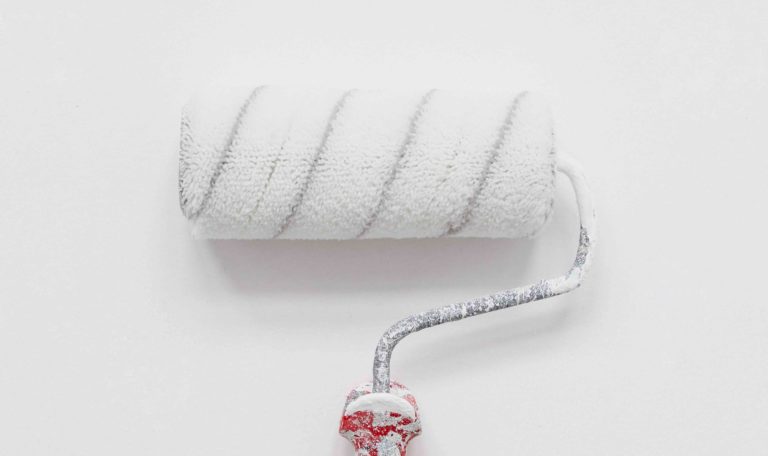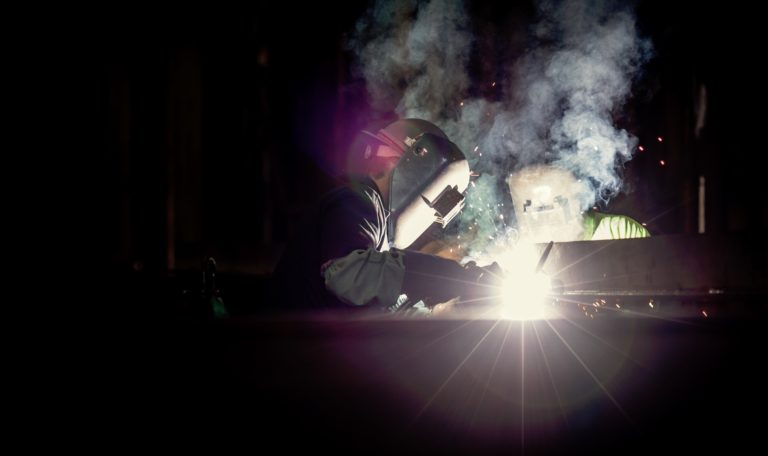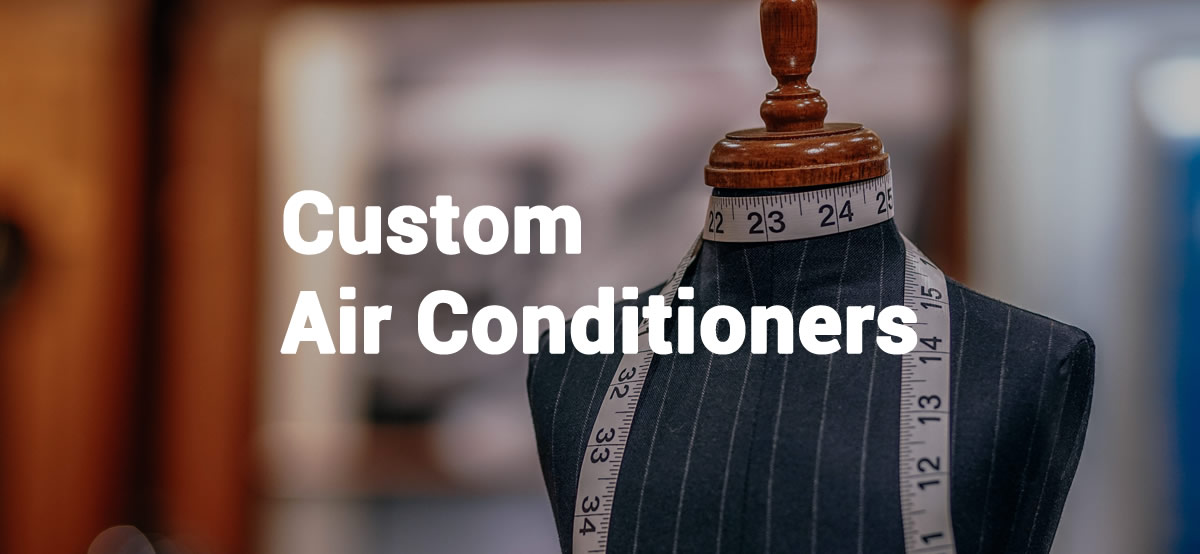How Do You Design a Custom Air Conditioner
Looking for the right air conditioner can be like shopping for pants, it’s easy to find a style and color you’re interested in, but they never have them in your size. Yeah there’s the Big-N’-Tall but wouldn’t you rather have a custom air conditioner engineered to precisely what you need?
Just like the Bespoke suites on Savile Row, building a custom air conditioner is going to be more expensive than picking something up off the shelf, but sometimes, there isn’t anything on the shelf that works for your needs…especially in an industrial setting.
We got our start modifying units for hazardous industrial and explosion-proof environments. For those not familiar with the process, to make units compliant for severe duty environments, you have to strip a unit down completely, upgrade, replace or modify every major component inside then put it all back together. It wasn’t long before customers started requesting custom air conditioners in every configuration imaginable so we broke the system down into 5 easy steps.
The Custom Air Conditioner Build Process
- Identify the environment your unit will operate in, including any hazardous gasses, dust or fibers.
- Decide if there is an existing unit that can be modified to your needs or will this be a new build from the ground up.
- Choose the features you need in the unit. Cooling capacity, heat, ventilation, dehumidification, etc.
- Decide the size, voltage and form factor (wall-mount, rooftop, etc).
- Last, Identify any extra features, certifications, controls alarms your system will need.

Identify Location and Environmental Hazards
Identifying the environment your unit will operate in is paramount. It’s easy to get overwhelmed with terms like Explosion Proof and Hazardous duty but understanding the hazards your unit operates in helps us know how to build your custom air conditioner. Sometimes it’s already specified and all you have to tell us is Class 1 div 2 groups C&D and we’re good to go, other times you need help figuring the official designation out. We have a guide to understanding explosion proofing in three steps that can help, or fill out as much information on the Build Yours button above, upload any specification you have and we’ll reach out and help you figure it out.
Second, we’ll need to know if there is already something on the market close to what you need or if this will be a new custom unit. Anytime we can modify equipment that already exists we can save time, money and unnecessary engineering.
For equipment modification, we can acquire them through our existing relationships with major manufacturers, or you’re welcome to provide it your self. We have working relationships with a lot of major manufacturers because they frequently use us as their customization arm for unique customer requests.
For sticks up, custom air conditioners we’ll need to identify the form factor (wall-mount, pad-mount, rooftop, split system, through the wall, etc) environment it will operate in (Oil and Gas, Chemical, Electrical, Wastewater Treatment, etc) hazards it may encounter through normal operation and details on the size, electrical and ventilation requirements.
Our engineers have decades of experience designing systems for industry giants like Emerson – Copland, and LG.
Once you’ve established the environment and form factor, you can get into the specifics of the unit’s functions. If not already specified, we can help you with heat load calculations. We’ve built fractional tonnage units from 4,000 BTUh all the way up to 1,200,000 BTUh (100.0 Ton).
Most of our units are primarily for cooling, but if necessary, any air conditioner can easily become a heat pump or have electrical, gas, steam, or water heating options. We also offer explosion proof heaters electric heaters.
Ventilation
 Ventilation is unique to each location. Some situations necessitate blank-off plates to eliminate the chances of external air getting inside the conditioned space. Keeping external factors like dust, humidity, toxic or corrosive air may be necessary but other times, fresh air is needed to pressurize a building or provide fresh air to the occupants of a structure or dilute any gas build up from batteries or other dangerous gas’. Fresh air can also be used to cool a building when conditions permit with an economizer.
Ventilation is unique to each location. Some situations necessitate blank-off plates to eliminate the chances of external air getting inside the conditioned space. Keeping external factors like dust, humidity, toxic or corrosive air may be necessary but other times, fresh air is needed to pressurize a building or provide fresh air to the occupants of a structure or dilute any gas build up from batteries or other dangerous gas’. Fresh air can also be used to cool a building when conditions permit with an economizer.
 Dehumidification
Dehumidification
Every air conditioner can dehumidify, but it needs to be “cooling” to condense the water onto its coils to remove the moisture out of the air. What if your space is comfortable, but you still need to remove humidity? Factors including the ambient temperature and unit size control when the air conditioner can operate in a cooling mode, but if you have tight tolerances for dehumidification, additional steps can be taken to ensure humidity levels are kept down. Recycled heat aka “hot gas dehumidification” is known to be the most economical way to dehumidify but does come with higher upfront costs. This method requires a second coil on the back side of your (cold) evaporator coil to recycle the hot gas from the compressor back into the air. This method brings the air temperature back up to the temperature it was before it cooled on your evaporator coil. A second method is with Electric reheat dehumidification. It’s upfront costs are much lower than hot gas dehumidification but require a much more significant circuit breaker and energy use will be much higher during periods of active dehumidification because you use a heater to bring the temperature up after air passes the cold evaporator coil.
Optional Accessories To Consider:
Single Circuit, Dual Circuit or Multi Circuit
Detection and Alarms – Audible, Visual, filter, pressure, smoke, gas.
Dampers – Zero leak, fire, smoke.
Flow Detection with Alarms
Filters:
MERV,
Washable
Carbon honeycomb potassium manganate
Coconut Shell
Chemical
Fiber
Washable Stainless
Refrigerant
r410-A (standard)
r404a
r407a and r407c.
r448 and r449
 Electrical
Electrical
Voltages at 1 Phase:
115-220 V
Voltages at 3 phase:
208-230 V, 415 V, 440-460 V, 460-480 V, 600 V
Frequency:
50 Hz & 60 Hz
Cabinet
Depending on the environment you install your unit, several cabinet material options are available including Painted Galvanized Steel, 304 Stainless Steel, 316 Stainless steel and Marine Grade Aluminum
 Custom Coatings
Custom Coatings
Baked on Enamel (Coil)
Bly-Gold (Coil)
Bronz-Glow (Coil)
Heresite (Coil)
HS-Epoxy (Coil)
Phenicon (Coil)
Polyurethane (Cabinet)
Power Coating (Cabinet)
Sherwin Williams (Cabinet)
Urethane-Coated (Cabinet)
Standard colors are white and gray. Sherwin Williams color matching available.
 Once we’ve identified the needs of the unit, we can put a quote together. Although every unit we make is custom, it’s possible your job is similar to something we’ve built in the past, and we can get you a quote in a day or two. Some units (especially larger tonnages) may require us to reach out to component suppliers for items we may not have prices on yet which can take 3-5 days.
Once we’ve identified the needs of the unit, we can put a quote together. Although every unit we make is custom, it’s possible your job is similar to something we’ve built in the past, and we can get you a quote in a day or two. Some units (especially larger tonnages) may require us to reach out to component suppliers for items we may not have prices on yet which can take 3-5 days.
When you’re ready to build your unit, a 30% non-refundable deposit is required with your purchase orders. We then start assembling all the components necessary for your equipment and schedule a time in the production queue. It depends on the size and complexity of your project, typical lead times are 6-10 weeks. If you need something faster, expedite fees can jump you up the production queue. 15% for 20 (Business) Days, 25% for 15 (business) days and 30% for 10 (Business) days.
We build all our custom air conditioners to I.E.C. and N.E.C standards with certified components. Third party testing and validation is available upon request.

